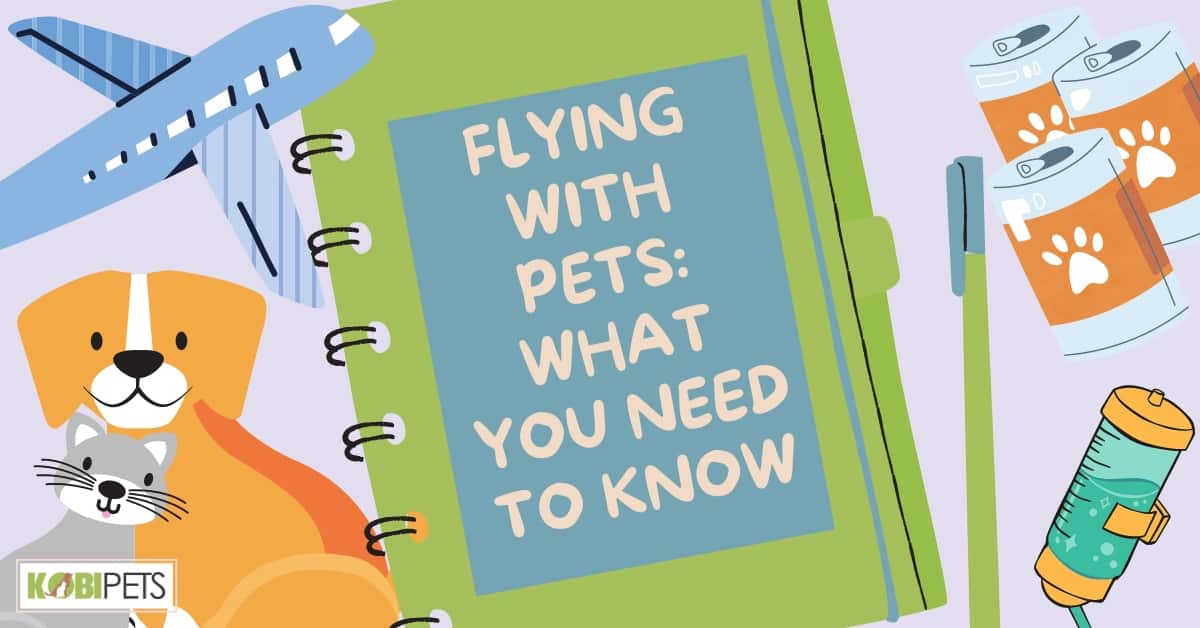
If you’re planning a trip with your pet in tow, it can be helpful to know the guidelines that airline companies have in place.
Traveling with your pet can be a rewarding experience, but it’s important to understand the airline policies and airport procedures before you book your flight. By doing your research beforehand and following these tips, you can help ensure that both you and your furry friend have a safe and enjoyable journey together.
Flying with pets is an endeavor that requires careful consideration of all factors involved, from crate sizes and type of pet allowed, to assessing breeds for comfort levels and duration of the flight.
Understanding Airline Policies for Pets
Traveling with pets can be a fun and rewarding experience, but it’s important to understand the airline policies before booking your flight.
Each airline has its own set of rules and regulations when it comes to flying with pets, so it’s important to do your research beforehand.
One of the most important things to consider is the size of your pet. Most airlines have restrictions on the size of pets that are allowed in the cabin or as checked baggage.
It’s also important to note that some breeds may not be allowed on certain airlines due to their physical characteristics.
Another factor to consider is the type of carrier you will need for your pet.
Most airlines require carriers that are large enough for your pet to stand, turn, sit, and lie down in a natural position without touching any side or top of the container. The carrier must also be well-ventilated and leak-proof.
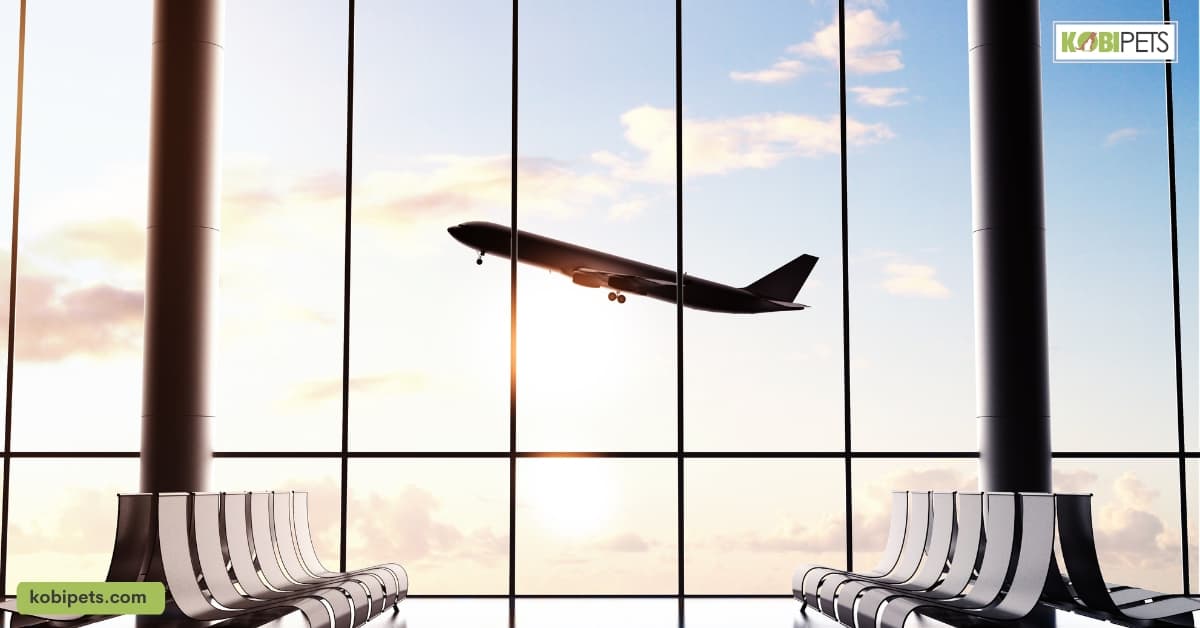
Choosing the Right Carrier for Your Pet
Flying with your pet can be a stressful experience, but choosing the right carrier can make all the difference.
Whether you’re traveling with a cat or dog, it’s important to select a carrier that is comfortable and safe for your furry friend.
When choosing a carrier, consider the size and breed of your pet. Some airlines have specific requirements for carriers based on the size of your pet, so be sure to check with your airline before purchasing a carrier.
It’s also important to choose a carrier that is well-ventilated and has enough space for your pet to stand up and turn around comfortably.
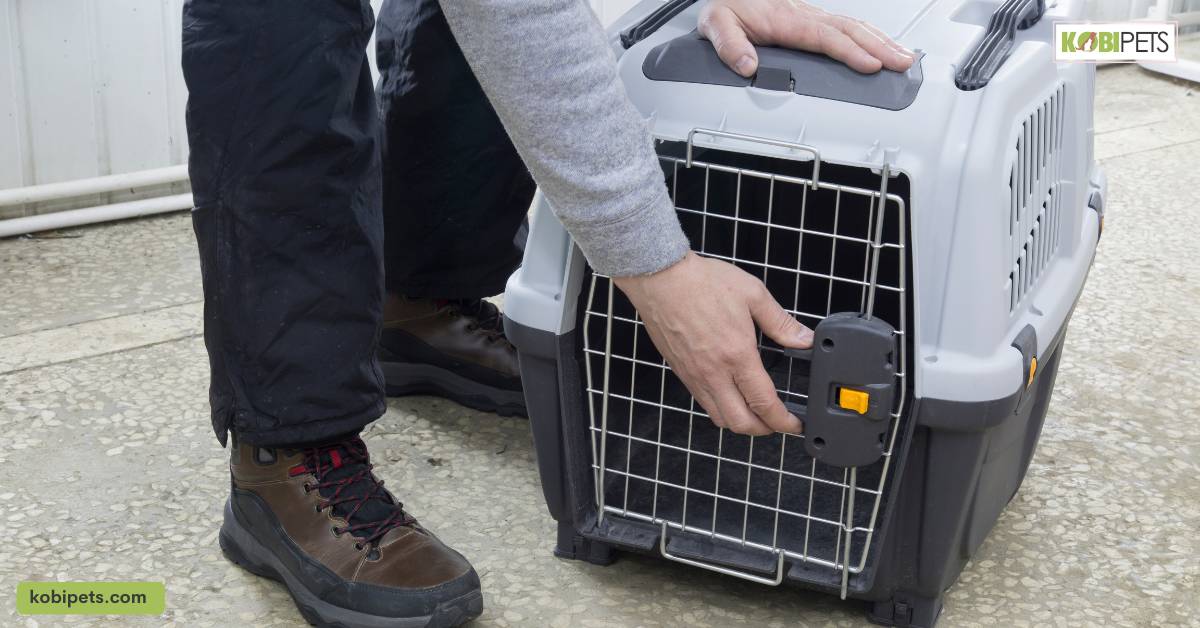
Packing for Your Pet’s Flight
Traveling with your furry friend can be a fun and exciting experience, but it also requires careful planning and preparation. If you’re planning to fly with your pet, there are several things you need to consider, including packing for your pet’s flight.
Here are some essential items that you should pack when traveling with your pet:
- Crate or Carrier: Most airlines require that pets be in a crate or carrier during the flight. Make sure the crate is the right size for your pet and meets the airline’s requirements.
- Collar and Leash: Even if your pet is in a crate, you’ll need a collar and leash for getting through security and walking around the airport.
- Food and Water: Bring enough food and water for your pet’s journey, including any layovers or delays.
- Medications: If your pet requires medication, make sure to bring enough for the entire trip.
- Toys and Comfort Items: Bring along some of your pet’s favorite toys or comfort items to help them feel more at ease during the flight.
- Health Records: Make sure you have copies of all necessary health records, including vaccination records, in case they’re needed during travel.
- Poop Bags: Accidents can happen, so make sure to bring plenty of poop bags for cleaning up after your pet.
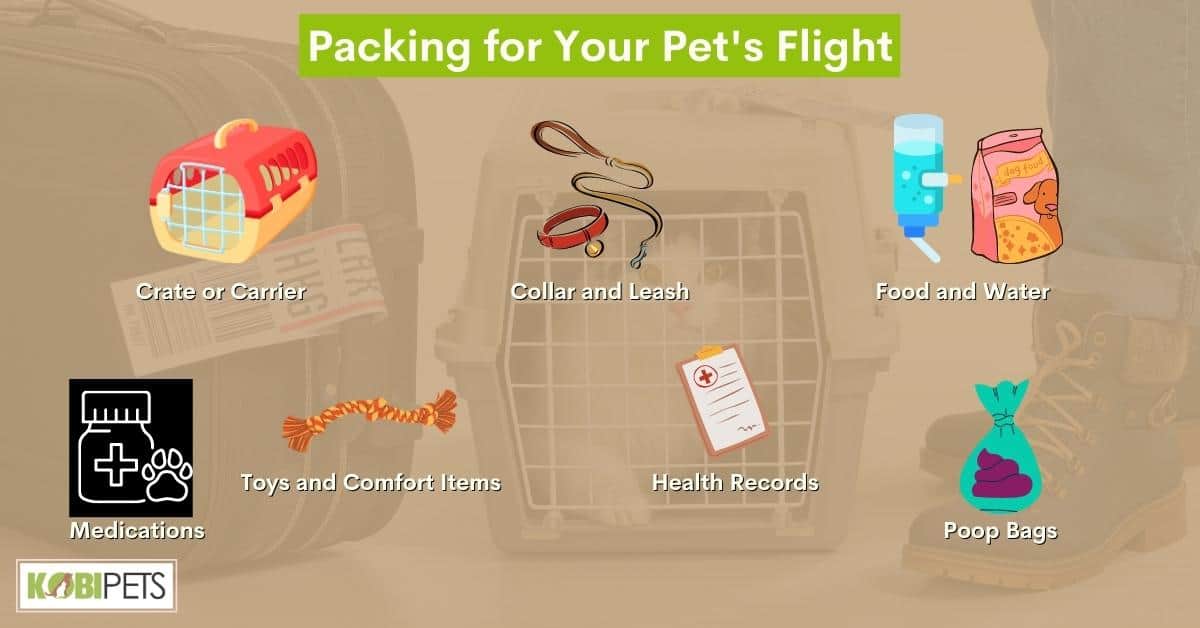
Packing for Your Pet’s Flight
Airport Procedures for Flying with a Pet
Traveling with your furry friend can be a fun and exciting experience, but it also requires careful planning and preparation. If you’re planning to fly with your pet, there are several things you need to consider, including airport procedures for flying with a pet.
Here are some important airport procedures to keep in mind when traveling with a pet:
- Check-in: When you arrive at the airport, you’ll need to check in with your airline and let them know that you’re traveling with a pet. Some airlines require that pets be checked in at a separate counter, so make sure to ask about their specific procedures.
- Security: You’ll need to go through security screening with your pet, which means taking them out of their carrier and carrying them through the metal detector. Make sure your pet is wearing a collar and leash for this process.
- Boarding: Most airlines allow pets to board before other passengers, which gives you time to get settled before takeoff. However, some airlines may require that pets board last.
- In-Flight Procedures: During the flight, your pet will need to stay in its carrier or crate under the seat in front of you (if they’re small enough). Larger pets may need to travel in the cargo hold of the plane.
- Arrival Procedures: When you arrive at your destination, you’ll need to pick up your pet from baggage claim or another designated area.
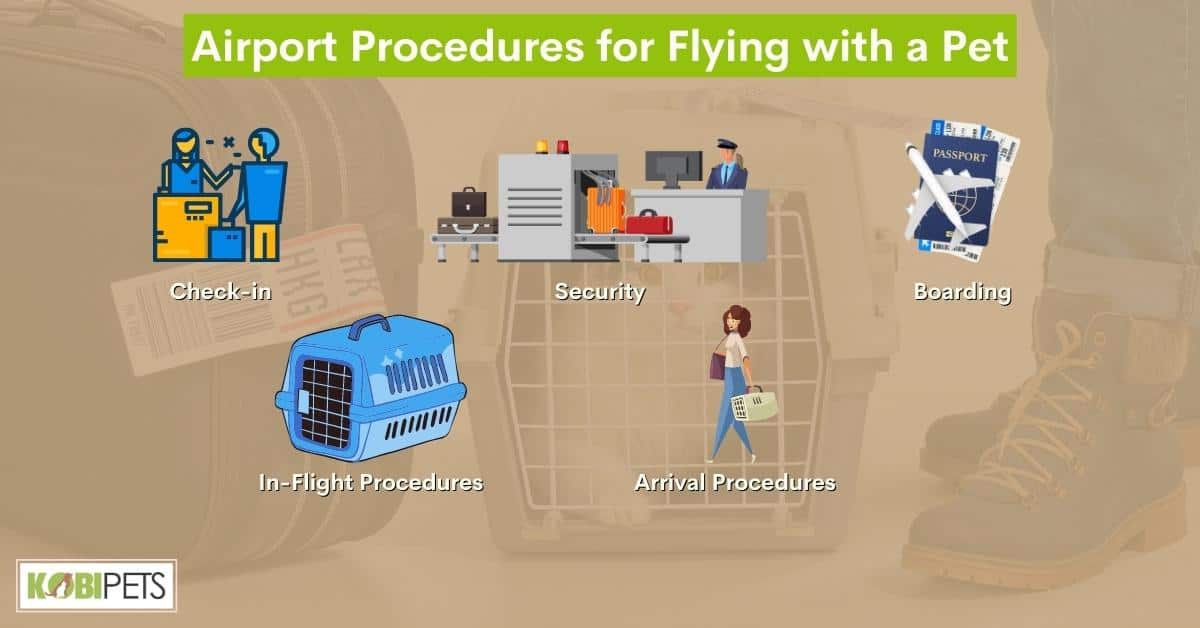
Airport Procedures for Flying with a Pet
Dealing with Pet Anxiety and Motion Sickness
Flying can be a stressful experience for pets, especially if they are not used to being in unfamiliar surroundings or traveling in a carrier. Additionally, some pets may experience motion sickness during flights, which can add to their discomfort.
Here are some tips to help your pet cope with anxiety and motion sickness while flying:
| Tip | Description |
|---|---|
| Consult with Your Veterinarian | Before traveling with your pet, consult with your veterinarian to ensure they are healthy enough to fly and to discuss any potential concerns, including anxiety and motion sickness. Your veterinarian may recommend medication or other interventions to help your pet stay calm and comfortable during the flight. |
| Familiarize Your Pet with the Carrier | To help your pet feel more comfortable during the flight, familiarize them with the carrier in advance. This can include leaving the carrier out in a common area of your home, placing treats or toys inside, and gradually increasing the amount of time your pet spends inside the carrier. |
| Use Calming Products | There are a variety of products available that can help calm anxious pets during travel, including pheromone sprays and calming supplements. You can discuss these options with your veterinarian to determine what might be best for your pet. |
| Practice Relaxation Techniques | If your pet experiences anxiety during the flight, you can practice relaxation techniques to help them calm down. This can include deep breathing exercises or gentle massage. |
| Limit Food and Water | To reduce the likelihood of motion sickness, it’s a good idea to limit your pet’s food and water intake prior to the flight. However, make sure they still have access to water throughout the day to stay hydrated. |
| Consider Using Motion Sickness Medication | If your pet experiences motion sickness during the flight, your veterinarian may recommend medication to help alleviate their symptoms. However, it’s important to follow your veterinarian’s instructions carefully, as some medications can have side effects or interact with other medications your pet may be taking. |
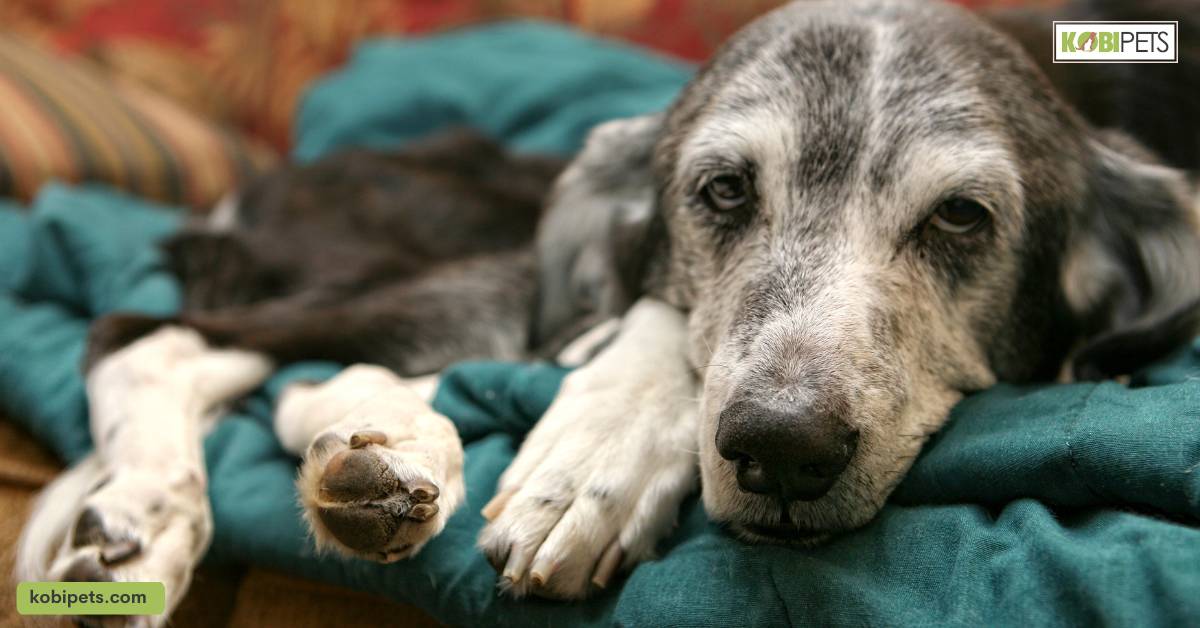
In conclusion
When it comes to flying with your pet, being prepared and having the right information is key.
Every airline has its own policies that must be followed in order to ensure a safe, healthy, and comfortable experience for both you and your furry four-legged friend.






